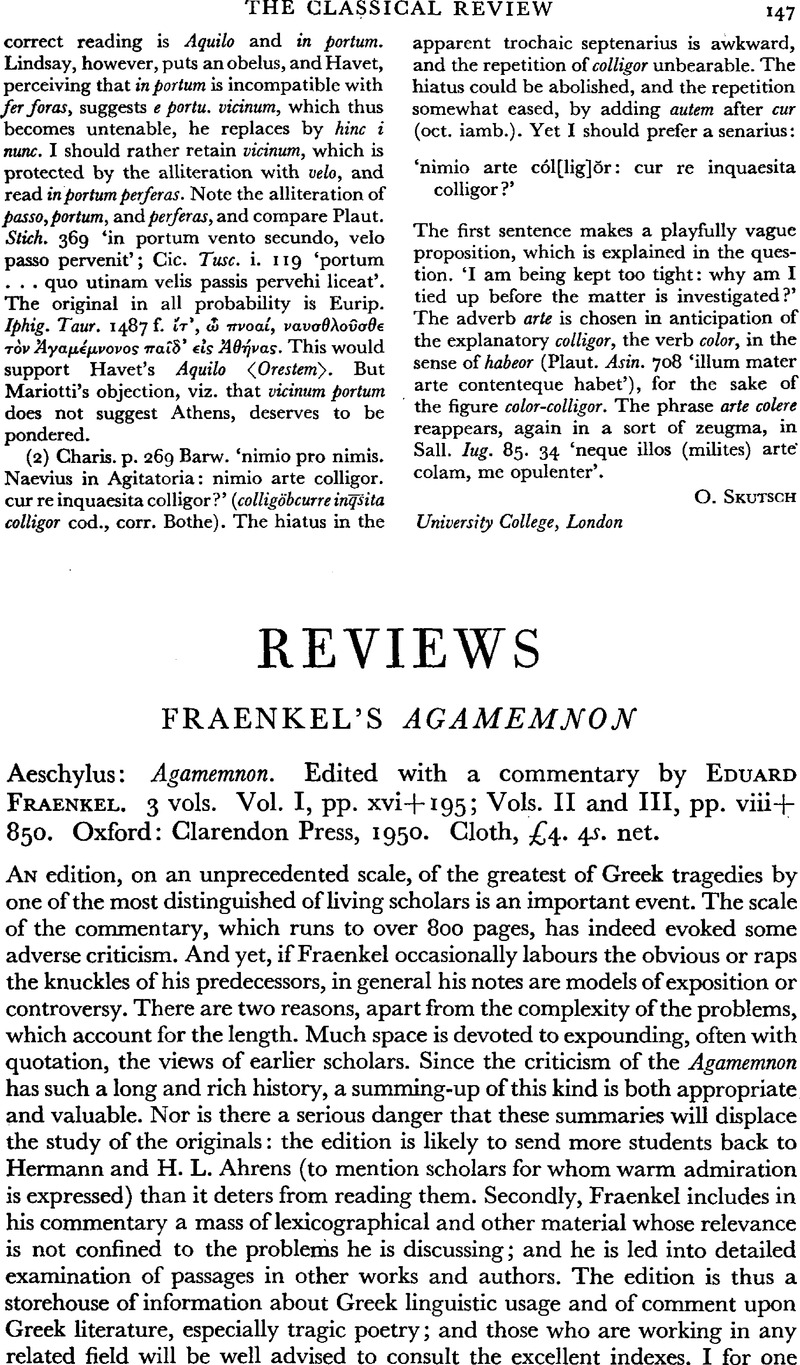No CrossRef data available.
Published online by Cambridge University Press: 13 February 2009

page 148 note 1 Is not Headlam's ὑπατηλεχέων too sum-marily dismissed? ὔπατος (55) really tells against ὔπατοι. (51); and Weil's in altiore etiam loco gives the show away.
page 148 note 2 On Fraenkel's own interpretation of this difficult passage, if the ἄρκυσ is to be the garment, it is hard to resist Risberg's ξύνερϒος, the combination of which with ξυναιτία might be supported by reference to 1486.
page 148 note 3 Here, and on 1470 (ἰσόψυχον), Fraenkel contributes a valuable examination of cometiam pounds with ἰρο-.
page 148 note 4 This interesting note occupies more than three pages. I ask those who criticize the length of the commentary to say what should have been omitted from it.
page 149 note 1 Fraenkel, like Wilamowitz, takes σπλάϒ-χνα. δ' οὔτοι μ. κτλ. as a general statement. But would Aeschylus have regarded this as a valid generalization? (D. H. Lawrence would have, but that is another matter.) I suggest that this is no more general than the statement about σπλάϒχνα in Cho. 413.
page 149 note 2 These δυσ-compounds are related to the employment of ευ^ and εὐ-compounds which is such a feature of the trilogy, and a study of which might reveal the virtues of Head-lam's εὐήϒορον (346) and Karsten's εὐφάτως(706).
page 149 note 3 Not always. Those which he postulates in the notes on ξύνευνoς (1116, top of p. 505), μελαϒκέρω (1127, p. 514), and οὐκ ὰναάνομαι θανει^ν (1653, p. 790) are of a particularly subtle type.
page 150 note 1 Fraenkel's demonstration that τοὺς ὰμοὶμεταιιτίους (811) does not imply arrogance is already familiar.
page 150 note 2 In general, I prefer Thomson's inter-pretation of the stichomythia: see also J.H.S. lxviii. 133. As to 939 ff., is it really credible that Agamemnon takes the ἐπίζηλος in Clytemnestra's ‘platitude’ as though she were seeking to involve him in a conflict with rivals? No wonder she missed the point in her reply!
page 150 note 3 See, e.g., the note on μάντιν οὔτιναψέϒων (186) and a further reference on p. 441. Headlam's interpretation seems preferable, if only because Agamemnon ought not to receive a pat on the back immediately before ἐμπαίοις τύχαισι συμπνέων.